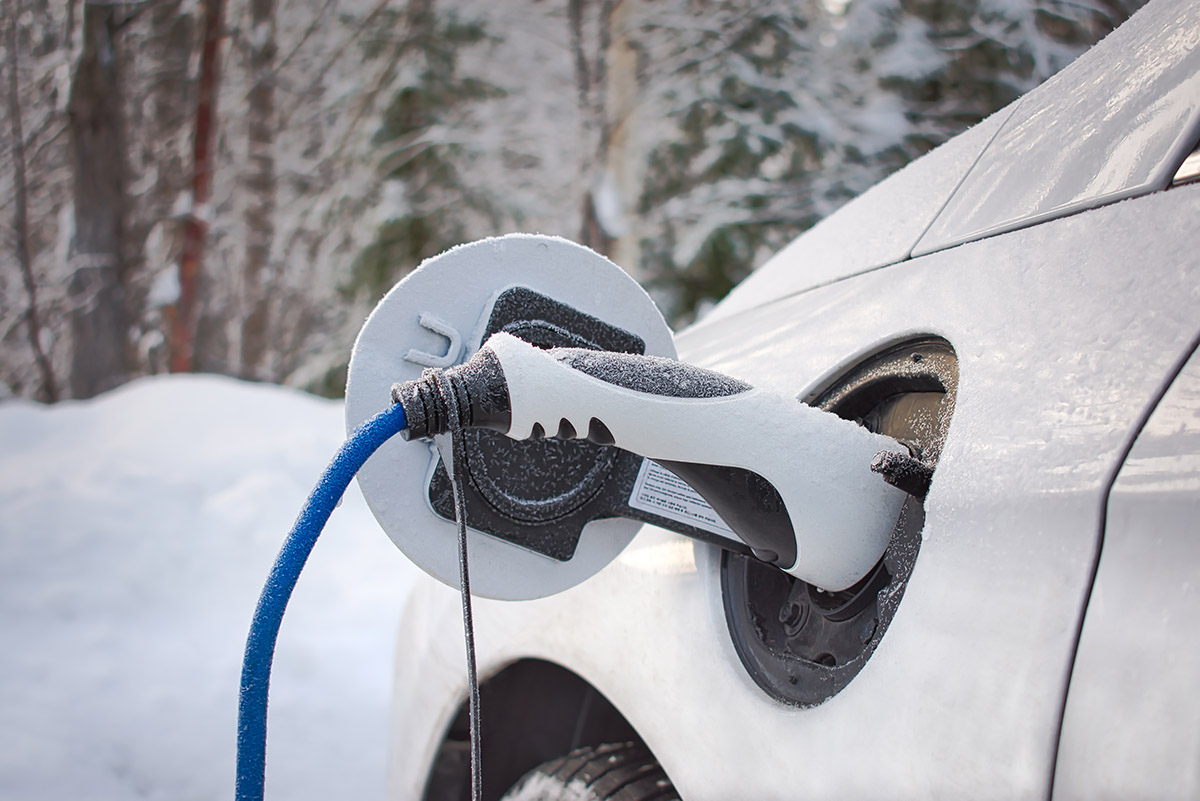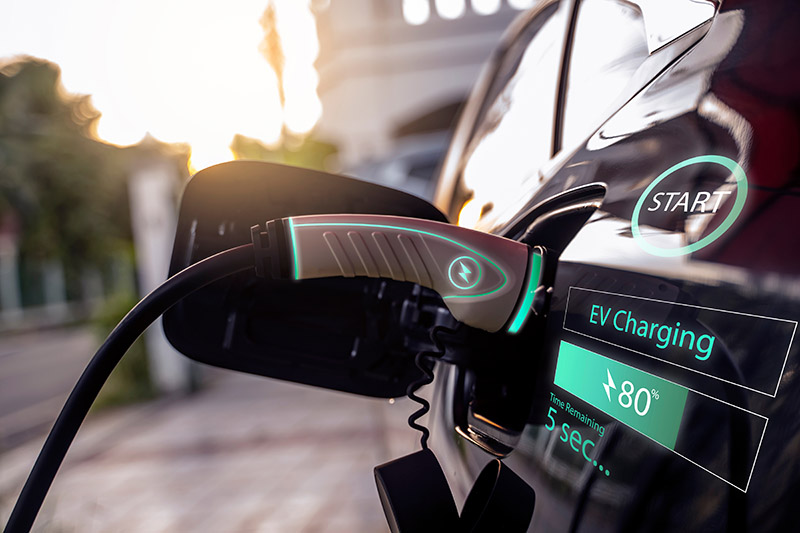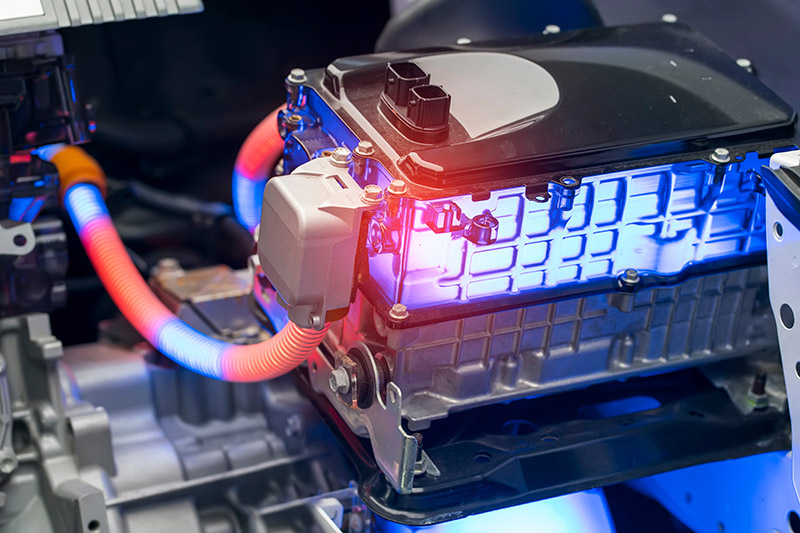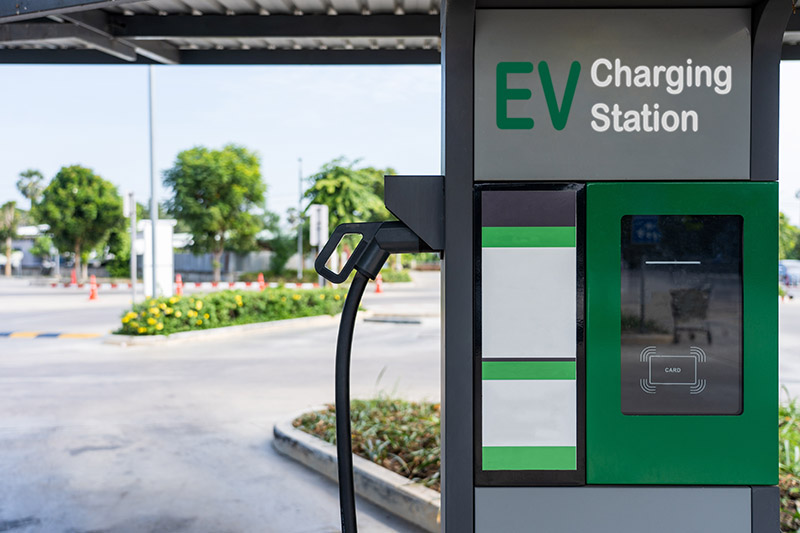Winter Driving Tips

Published: Thursday, 02 March 2023
From a decreased range to a drained battery, driving an EV in the winter can be difficult and even unsafe if done incorrectly. This is why it is crucial to fully prepare for any journeys beforehand using the quick and easy advice below.
Why do EV chargers take longer to charge in the winter?
While warmer temperatures make for perfect conditions for EV charging, wintry conditions can affect your vehicle’s capacity to maintain charge.
This decrease in range and charge time is due to your EV charger working overtime to heat your vehicle (with cars often freezing over in the height of winter). Rather than directing all energy towards your battery power, your charger heats up your battery below certain temperatures.
Keep your battery warm
When your EV battery drops below a certain temperature, it has to work harder than usual to get warm and begin charging your EV again. One way to keep your battery warm is by parking your EV in a garage if you have one available, or under some form of cover. This is particularly important overnight when temperatures drop to their lowest.
Plan longer charging times
When planning out your day, make sure you leave extra time to charge your EV. This is due to the charging process taking longer when your EV battery is cold. If you are in too much of a rush the next day, it might even be worth charging your vehicle overnight; not only is this cheaper, but it also gives your battery all night to charge instead of just a few hours.
Turn the heating down
Long winter journeys with the heating on full may be cosy, but they also come at a cost.
If left on full, your EV’s heaters will work to drain and even damage your battery over time. This means that you will have to stop on the way to your destination in order to top up your EV battery; something no one wants to pull over and do in the middle of winter.
In order to reduce the risk of this, try having your heating on at a reduced temperature, or just heat up single conductive components of your car- such as your seats or steering wheel.

Preheat your EV battery
Some EVs have useful features such as the option to be preheated. This will allow your vehicle to prioritise heating up its battery before use, meaning that it will have already reached its operating temperature before set-off. Using your EV straight after charging will mean that your battery is already preheated and won’t have to warm up again when you set off.
Practice driving smoothly
Just as constantly braking and revving your gears burns fuel in diesel and petrol cars, it also burns the battery in EV cars due to your car's battery having to work harder to do certain actions quickly.
Instead, driving smoothly in the wintertime will not only allow you to keep safe on icy roads, but it will also optimise your battery life.
Another option is to turn on the eco-driving setting if this is available to you. This will automatically reduce heat levels and accelerator pedal impact.
Pack a winter vehicle kit
You never know when an emergency might strike, which is why it is vital that you leave a winter kit well stocked up in your EV. This can include packing food, water, a blanket and other essentials you may need - allowing you to keep warm, well fed and hydrated if you broke down in the middle of nowhere. Items to pack include:
- Phone charger
- Torch
- De-icer and ice scraper

Research local EV charging stations
It is always worth knowing where your nearest charging station is on the way to your destination. This allows you to stay well prepared and take a diversion if your EV battery needs charging at any point along the way.
Apps such as ZumoCharge allow you to do just this - all you need to do is put in your postcode and it shows you the nearest EV charging spots to you. Some EV manufacturers such as Tesla also have similar apps.
It is important to remember that your driving range increases on longer trips rather than on several shorter trips. This is due to the cabin needing to reheat once it is cool - which as mentioned above, drains your EV battery.
Check your tyre pressure
Although important all year round, the icy roads in winter make wheel traction crucial to your safety as a driver.
This traction is a result of the soft rubber components on your wheels spinning and creating friction on the road. If your tyre pressure is lower than it should be, this friction is lost - meaning that your car is more likely to slip on ice and around corners.
In order to prevent this, you should check your tyre pressures before every journey, making sure to stop and check your tyres if it feels like your EV is drifting to one side whilst driving.

EV Chargers near me
Prepare for the winter ahead with YESSS Electrical. From EV chargers, to the latest driving accessories, our five-star range is sure to meet all your needs. Contact us now to put EV safety and efficiency first.

